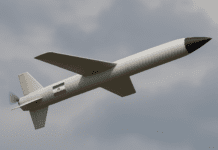This post is also available in:
 עברית (Hebrew)
עברית (Hebrew)
In what may be a defining moment for military robotics, Ukrainian forces have conducted a battlefield assault entirely using unmanned systems—without deploying any soldiers to the front. The operation, which took place in the Kharkiv region, involved both aerial and ground-based platforms to capture enemy personnel and reclaim fortified positions.
According to a statement by the Ukrainian 3rd Separate Assault Brigade, which led the operation, the attack was carried out using a blend of first-person view (FPV) kamikaze drones and ground robotic systems. The mission’s design centered on replacing direct human involvement with remotely operated machines, marking a rare instance where unmanned platforms formed the core of an offensive, rather than supporting it.
The attack began with a ground-based explosive robot targeting a Russian-held bunker. After the structure was destroyed, an additional unmanned ground system advanced toward the position. Facing the threat of further robotic attacks, the defending Russian troops reportedly surrendered. Coordination and real-time visuals from aerial drones were used to guide the surrendering soldiers toward Ukrainian-controlled territory.
The brigade behind the mission described it as the first known instance of a combat assault completed solely by unmanned systems. While unmanned vehicles have been widely used for reconnaissance, logistics, and explosive ordnance disposal, their use as the primary assault force—without accompanying infantry—is unprecedented in modern warfare.
This operation demonstrates how robotics and remote systems are being adapted beyond support roles into direct combat scenarios. Ukraine, facing sustained attritional conflict and limited traditional firepower, has leaned heavily into developing cost-effective drone and robotic platforms. These include FPV drones for precision strikes, ground vehicles for explosive delivery, and AI-enhanced targeting systems.
Though Ukraine has not disclosed the number of captured personnel or the location specifics, the implications are clear: robotic warfare is moving from the margins to the center of modern military planning. The mission also suggests that unmanned systems could offer new pathways to reduce battlefield casualties, execute targeted assaults, and maintain pressure in contested zones without the same level of human exposure.
For militaries and defense planners observing this conflict, Ukraine’s real-world application of robotic combat may signal a shift from theoretical testing to battlefield integration.


























